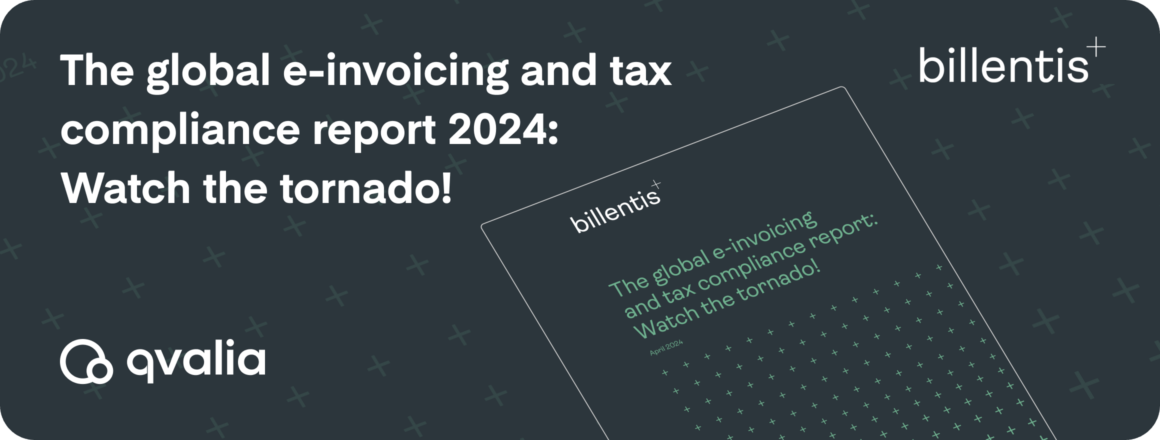
Integrated Digital Trade (IDT) refers to the concept of seamless exchange of goods, services, and information between companies through digital platforms and technologies. Encompassing various aspects of B2B commerce, IDT includes online transactions, digital supply chain management, electronic payments, and data analytics, to create a more efficient and interconnected global trading system.
By leveraging digital tools and networks like Peppol, businesses can streamline operations, enhance communication, and improve the overall customer experience, ultimately driving growth and innovation in the global market.
Based on the key takeaways from Billentis’ latest report on e-invoicing, let’s explore the development of IDT, its key drivers, and the role of emerging technologies in shaping the future of digital trade.
Market development and drivers
The adoption of Integrated Digital Trade is driven by several key factors:
- Efficiency & cost savings: Automating transactions and financial operations reduces manual intervention, minimizes errors, and cuts down on processing time, leading to significant cost savings.
- Regulatory compliance: Increasingly stringent regulatory requirements necessitate digital solutions to ensure compliance with tax and reporting obligations.
- Technological advancements: Emerging technologies such as Artificial Intelligence (AI), blockchain, and the Internet of Things (IoT) provide new capabilities for enhancing transactional accuracy and security.
- Global trade dynamics: The globalization of business operations demands more efficient and transparent cross-border transaction processes.
The role of invoice finance and supply chain finance in IDT
Invoice finance and supply chain finance are critical components of IDT, offering businesses flexible financing options and improving cash flow management. Key elements include:
- Receivables & invoice discounting: Businesses can sell their outstanding invoices to financial institutions at a discount to receive immediate cash flow, improving liquidity and financial stability.
- Receivables factoring: Similar to invoice discounting, factoring involves selling invoices to a third party, which collects customer payments.
- Early payments & dynamic discounting: Companies offer early payment discounts to their buyers, incentivizing faster payments and improving cash flow.
- Payables finance: Also known as reverse factoring, suppliers receive early payments for their invoices from financial institutions based on the buyer’s creditworthiness.
Overcoming late payments: payment solutions and e-invoicing
Late payments have long been challenging in Business-to-Business (B2B) and Business-to-Government (B2G) transactions. E-invoicing and new payment solutions are combating this issue by:
- Regulatory initiatives: Governments are implementing regulations that mandate timely payments and enforce penalties for late payments.
- Automated payment processing: E-invoicing systems can integrate with payment platforms to automate invoice approval and payment processes, reducing delays.
- Real-time payment solutions: Technologies like instant payments and blockchain-based transactions enable real-time settlements, ensuring that payments are made promptly.
Emerging technologies in e-invoicing
The impact of AI and blockchain
Emerging technologies such as Artificial Intelligence (AI) and blockchain are transforming e-invoicing and digital trade. These technologies offer several benefits:
- Artificial Intelligence: AI can automate the extraction and validation of invoice data, detect anomalies, and ensure compliance with regulatory requirements. AI-driven analytics can also provide insights into payment trends and financial performance.
- Blockchain: Blockchain technology provides a secure and immutable ledger for recording transactions, ensuring the authenticity and integrity of invoice data. This enhances transparency and trust in digital trade processes.
Hands-on applications and benefits
- AI in e-invoicing: Companies use AI to streamline invoicing processes, reduce manual errors, and enhance compliance. For example, AI-powered systems can automatically match invoices with purchase orders and delivery receipts, ensuring accuracy and speeding up payment cycles.
- Blockchain for digital trade: Blockchain can be used to create tamper-proof transaction records that can be easily audited by tax authorities. This technology also facilitates real-time cross-border transactions, reducing the time and cost of international trade.
Two examples
- Company A: A multinational corporation implemented an AI-driven e-invoicing system to automate its invoicing processes. The system reduced manual data entry errors by 90% and invoice processing time by 50%.
- Company B: A logistics company adopted blockchain technology to track and verify shipments. This implementation improved transparency in the supply chain and reduced the risk of fraud and counterfeiting.
Future trends and predictions
2024-2028 market predictions for e-invoicing and digital trade
The market for e-invoicing and digital trade is poised for significant growth in the coming years. Key predictions in the report from Billentis include:
- Increased e-invoice volume: The volume of e-invoices is expected to grow exponentially, driven by regulatory mandates and the adoption of digital trade practices.
- Market value growth: The global e-invoicing market is projected to increase from $8.9 billion in 2024 to approximately $23.7 billion by 2028.
- Regional adoption: While Europe and Latin America have been early adopters, regions like Asia, Oceania, and Africa are expected to grow rapidly in e-invoicing adoption.
The role of ESG
Environmental, Social, and Governance (ESG) considerations increasingly influence business practices, including digital trade. Companies are adopting e-invoicing and other digital solutions to:
- Reduce environmental impact: Digital processes reduce the need for paper, contributing to environmental sustainability.
- Enhance social responsibility: Transparent and efficient transaction processes build stakeholder trust and support ethical business practices.
- Strengthen governance: Digital solutions ensure compliance with regulatory requirements and enhance overall corporate governance.
The integration of digital trade and emerging technologies is transforming the way businesses operate, offering significant benefits in terms of efficiency, compliance, and transparency. As the market for e-invoicing and digital trade continues to grow, businesses that embrace these advancements will be well-positioned to thrive in the digital age.
By staying informed about regulatory changes, leveraging emerging technologies, and adopting integrated digital trade practices, businesses can navigate the complexities of the modern market, reduce operational costs, and enhance their competitive edge.
Download The global e-invoicing and tax compliance report to learn more about IDT and trends in electronic business messaging.



